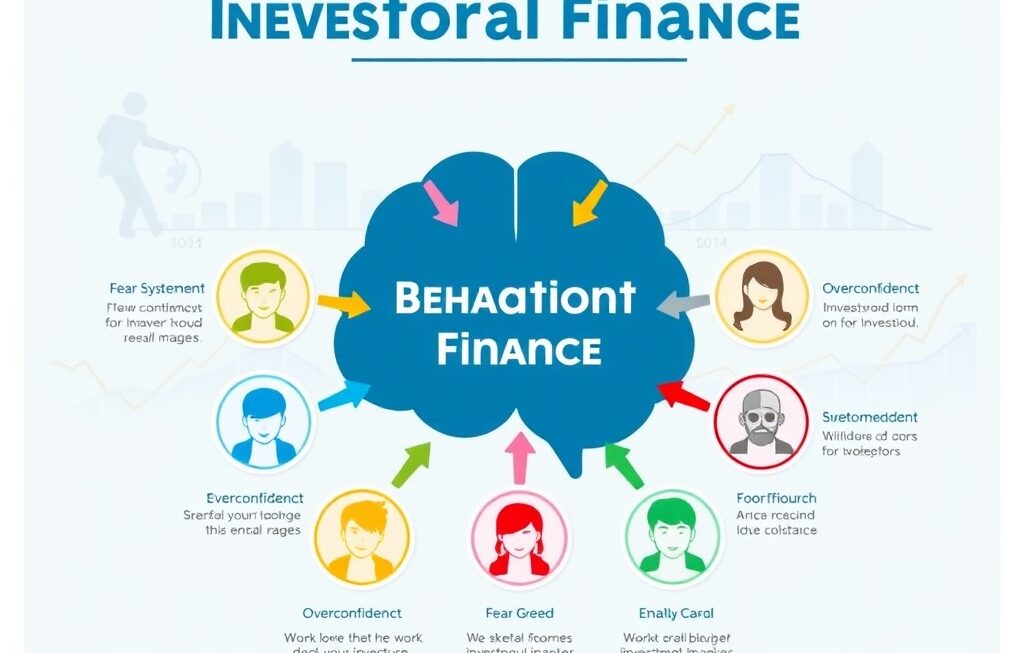Investing has always been considered a numbers game — a world ruled by charts, trends, and cold analysis. Yet, beneath the surface of every market decision lies something far more human: emotion. Behavioral investing is the study of how psychological influences and biases affect investors’ choices and market outcomes. By understanding these tendencies, investors can make smarter, more objective decisions that lead to long-term financial success.
Behavioral investing is not just about psychology; it’s about strategy. It recognizes that investors often act irrationally — buying high during market euphoria and selling low during fear. However, by identifying these emotional triggers, investors can learn to control their behavior, turning biases into opportunities rather than costly mistakes.
The Roots of Behavioral Investing
The concept of behavioral investing gained traction in the late 20th century, thanks to the work of psychologists Daniel Kahneman and Amos Tversky. Their groundbreaking research revealed that humans are not always rational decision-makers. Instead, they rely on mental shortcuts known as heuristics, which can lead to predictable errors in judgment.
Traditional finance assumes investors act rationally to maximize returns. Behavioral finance, however, accepts the opposite: that emotions and cognitive biases often override logic. This perspective revolutionized modern investing by merging economics with psychology, giving rise to what we now call behavioral investing.
Common Psychological Biases That Influence Investors
Even the most experienced investors are not immune to psychological biases. Let’s explore some of the most common ones that shape financial decisions — and how to overcome them.
1. Overconfidence Bias
Many investors overestimate their knowledge or ability to predict market movements. This bias can lead to excessive trading, underestimating risks, and ignoring diversification. Recognizing overconfidence helps investors pause before making impulsive moves.
2. Loss Aversion
Research shows that people fear losses about twice as much as they value equivalent gains. This emotional imbalance leads investors to hold losing stocks too long or sell winners too soon. Learning to detach emotionally from short-term losses allows for better long-term outcomes.
3. Herd Behavior
When investors follow the crowd — buying when others buy or selling when others panic — markets become volatile. Herd mentality contributed to bubbles like the dot-com and housing crises. Independent thinking and disciplined analysis are key to countering this bias.
4. Anchoring
Anchoring occurs when investors fixate on specific price points, such as the original purchase price of a stock. This attachment clouds judgment and prevents rational decision-making. Successful investors learn to reassess value based on updated market data, not outdated anchors.
5. Confirmation Bias
This bias leads investors to seek information that supports their existing beliefs while ignoring conflicting evidence. For example, an investor bullish on tech stocks may overlook negative indicators. To combat this, diversify sources of information and regularly challenge assumptions.
6. Recency Bias
Recency bias makes investors overemphasize recent events when predicting future performance. A few good months in the market might create false confidence, while recent declines may trigger unnecessary panic. Understanding that markets move in cycles helps maintain perspective.
The Emotional Rollercoaster of Investing
Markets rise and fall, but emotional reactions often amplify these movements. Greed, fear, and regret are powerful motivators that can drive irrational behavior. Behavioral investing encourages emotional discipline — the ability to stay calm during market turbulence and avoid making decisions based on fear or excitement.
Developing this emotional intelligence is a crucial skill for long-term success. When investors learn to recognize emotions as part of the process rather than something to eliminate, they can make more consistent and thoughtful decisions.
Turning Biases into Opportunities
Behavioral investing is not about removing emotions entirely — it’s about harnessing them. Here’s how to turn common psychological biases into strategic advantages:
- Acknowledge Your Biases: Awareness is the first step to control. Keep a trading journal to document decisions and the emotions driving them.
- Create a Long-Term Plan: Establishing clear goals and sticking to a disciplined strategy reduces the temptation to act on short-term impulses.
- Use Diversification as a Safety Net: A diverse portfolio minimizes risk and helps manage emotional responses to market volatility.
- Automate Decisions: Tools like robo-advisors or systematic investing can reduce emotional interference by enforcing consistency.
- Seek Objective Advice: Working with a financial advisor can help provide perspective and counteract personal biases.
The Role of Technology in Behavioral Investing
In the modern financial landscape, technology plays a growing role in mitigating human biases. AI-driven platforms analyze investor behavior patterns, offering insights that can guide more rational decision-making. For example, algorithmic trading systems execute predefined strategies, removing emotion from the equation.
At the same time, technology has introduced new challenges. The accessibility of trading apps and social media-driven hype can encourage impulsive behavior — as seen in the “meme stock” phenomenon. Behavioral investing provides the framework to navigate these digital-age influences wisely.
Behavioral Investing in Practice
Professional investors and institutions now integrate behavioral finance principles into their strategies. They use behavioral data analytics to identify market sentiment and anticipate irrational trends before they occur. Hedge funds, for instance, analyze social media sentiment to gauge retail investor behavior, allowing them to act ahead of the crowd.
Individual investors can apply similar principles by staying informed, maintaining emotional balance, and adopting a mindset focused on learning rather than reacting. Behavioral investing, when applied correctly, transforms psychological vulnerabilities into competitive advantages.
The Connection Between Behavioral Investing and Market Cycles
Market cycles — boom, correction, recovery — are often reflections of collective investor psychology. During booms, optimism drives excessive risk-taking; during downturns, fear causes widespread sell-offs. Behavioral investing helps investors recognize these patterns and respond strategically rather than emotionally.
Understanding these psychological undercurrents enables investors to identify opportunities hidden within volatility. For example, when fear dominates the market, disciplined investors can find undervalued assets poised for recovery.
Education: The Key to Mastering Behavioral Investing
One of the most powerful tools against bias is education. Learning about behavioral finance empowers investors to recognize their tendencies and develop strategies to overcome them. Financial literacy platforms and investment courses increasingly incorporate behavioral modules to help investors make more rational choices.
Additionally, global financial institutions and universities now emphasize behavioral finance as a critical part of modern investment training. This shift reflects growing recognition of the human side of finance — an aspect that can no longer be ignored in the pursuit of profitability.
Behavioral Investing and Long-Term Wealth Building
Successful investing is not about avoiding mistakes but about managing them wisely. Behavioral investing teaches patience, discipline, and adaptability — all essential traits for sustainable wealth creation. Instead of chasing trends or reacting to headlines, behavioral investors stay grounded in their strategy, evaluating every decision through the lens of psychology and evidence.
By doing so, they cultivate resilience — an invaluable asset in the unpredictable world of investing.

In Summary: Embracing the Human Element in Investing
Behavioral investing reminds us that markets are not driven by algorithms alone, but by people — each with unique fears, hopes, and biases. Understanding these human elements gives investors an edge, allowing them to navigate volatility with confidence and insight.
In a world where information moves faster than ever, self-awareness becomes the ultimate investment tool. By turning biases into opportunities, investors can achieve more than just profits — they can achieve mastery over their own behavior.




